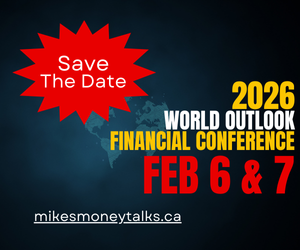Bonds & Interest Rates
There are four stages of fiat money printing that have been used by central banks throughout their horrific history of usurping the market-based value of money and borrowing costs. It is a destructive path that began with going off the gold standard and historically ends in hyperinflation and economic chaos.
Stage one is the most benign of the four, but it sets the stage for the baneful effects of the remaining three. The first level of monetary credit creation uses the central banks’ artificial savings to set short-term interest rates through the buying and selling of short-duration government debt. This stage appears innocuous to most at first but is insidiously destructive because it prevents the market from determining the cost of money. This is crucially important because all assets are priced off of the so called “risk-free” rate of return. A gold standard keeps the monetary base from rising more than a few percentage points per annum and thus restrains bank lending. However, having a fiat currency also means a nation has a fiat monetary base. This leads to unfettered bank lending and the creation of asset bubbles.

The second stage of monetary madness has been around for decades but is now commonly known as Quantitative Easing (QE). After several cycles of lower and lower short-term interest rates that are intended to bring the economy out of successive recessions, the central bank (CB) ends up pegging rates at zero percent or below. Once CBs run out of room on the downside of short-term rates they go out along the yield curve and begin to artificially push down borrowing costs for long-term debt. It is important to note that at this stage CBs only purchase assets on private banks’ balance sheets and at least pretend they will someday liquidate these holdings.
also from Marc Faber:
also from Marc:

 I think money printing in the one or the other form will continue. Now increasingly central banks and fund managers and treasury departments are talking about helicopter money. Helicopter money you don’t just buy securities that are traded in the public market like treasuries or sovereign bonds and equities, but you essentially distribute money to each individual. Distributing money is like a tax cut but whereas the tax cut only flows to people that actually pay tax, pay federal tax in the US and roughly half of Americans do not pay Federal tax. So, that tax cut is not taxing everybody but if I send a cheque to every man, woman and child for USD 10000 then he gets that money and he can then go and spend that money, for a month or two that obviously boosts economic activity unquestionably but then comes the question, who finances this? So, what can happen in this helicopter money is that the treasury issues bonds that investors would buy or the treasury just gets the money from the Federal Reserve, so that is another form of money printing.
I think money printing in the one or the other form will continue. Now increasingly central banks and fund managers and treasury departments are talking about helicopter money. Helicopter money you don’t just buy securities that are traded in the public market like treasuries or sovereign bonds and equities, but you essentially distribute money to each individual. Distributing money is like a tax cut but whereas the tax cut only flows to people that actually pay tax, pay federal tax in the US and roughly half of Americans do not pay Federal tax. So, that tax cut is not taxing everybody but if I send a cheque to every man, woman and child for USD 10000 then he gets that money and he can then go and spend that money, for a month or two that obviously boosts economic activity unquestionably but then comes the question, who finances this? So, what can happen in this helicopter money is that the treasury issues bonds that investors would buy or the treasury just gets the money from the Federal Reserve, so that is another form of money printing.
“Central banks are now talking about helicopter money. The Federal Reserve will also introduce QE 4 (another round of quantitative easing),”
also from Marc:

 On the heels of the move by the Bank of England to lower rates and increase QE, look at who is really getting crushed by the BoE’s move.
On the heels of the move by the Bank of England to lower rates and increase QE, look at who is really getting crushed by the BoE’s move.
A portion of today’s note from Art Cashin: The BOE Makes Its Moves – The Bank of England made a series of moves this morning. I will defer to my friend, Peter Boockvar of the Lindsey Group, who as usual has a quick and typically lucid analysis. Here’s a bit of what he wrote:
related:

Stock Trading Alert originally sent to subscribers on August 4, 2016, 6:38 AM.
Briefly: In our opinion, speculative short positions are favored (with stop-loss at 2,210, and profit target at 2,050, S&P 500 index).
Our intraday outlook is bearish, and our short-term outlook is bearish. Our medium-term outlook is now neutral, following S&P 500 index breakout above last year’s all-time high:
Intraday outlook (next 24 hours): bearish
Short-term outlook (next 1-2 weeks): bearish
Medium-term outlook (next 1-3 months): neutral
Long-term outlook (next year): neutral
The main U.S. stock market indexes gained 0.2-0.3% on Wednesday, retracing some of their recent move down, as investors reacted to economic data, quarterly earnings releases. The S&P 500 index continues to trade within a short-term consolidation following last month’s rally. The nearest important level of support is at around 2,150, marked by Tuesday’s daily low. The next important support level is at 2,130-2,135, marked by previous level of resistance. On the other hand, resistance level is at 2,170-2,175, marked by Monday’s all-time high of 2,178.29. The next potential resistance level is at 2,200. For now, it looks like a relatively flat correction within medium-term uptrend. Will the market continue higher? Or is this some kind of a topping pattern before downward reversal?


 …., ready for ‘whatever action necessary’
…., ready for ‘whatever action necessary’
The Bank of England cut interest rates on Thursday for the first time since 2009, revived its bond-buying programme and said it would take “whatever action is necessary” to achieve stability in the wake of Britain’s vote to leave the European Union.
The central bank said it expected the economy to stagnate for the rest of 2016 and suffer weak growth throughout next year. It cut its main lending rate to a record low 0.25 percent from 0.5 percent, in line with market expectations.
But it also launched two new schemes, one to buy 10 billion pounds of high-grade corporate bonds and another – potentially worth up to 100 billion pounds – to ensure banks keep lending even after the cut in interest rates.
…continue reading for markets reaction HERE
more news:
U.S. jobless claims rise marginally; layoffs increase in July












